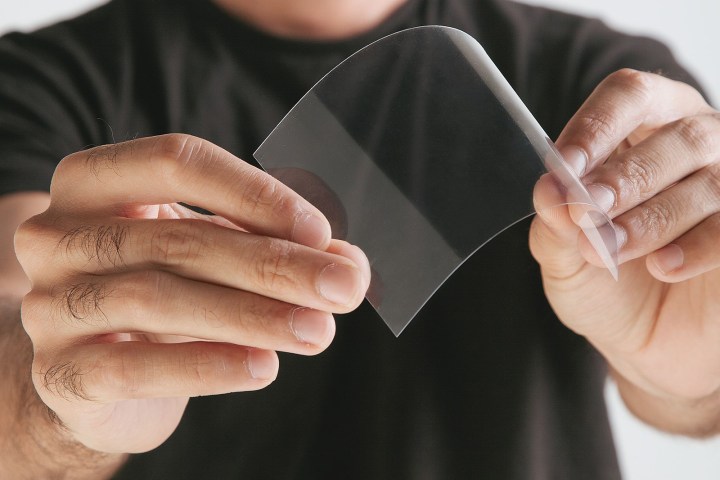
Graphene is a layer of graphite that, despite being as thin as a single atom, is one of the strongest known materials. While that allows the supermaterial (yes, like a superfood but for tech) to create sturdy, small objects, it exhibits a few other qualities that are essential to its integration into digital photo sensors. The material is transparent and also highly conductive.
As part of the newly developed digital image sensor, the graphene serves as a phototransistor — which is just a fancy way of saying it turns light into electrical current. The graphene is just one layer of the sensor, but its job of turning light into electricity could allow small sensors to achieve big resolution.
Each pixel on the sensor is covered with graphene. That layer is covered with a layer of quantum dots. Essentially, the top dot layer absorbs the light and transfers it as electrons into the graphene. The sensor’s circuit detects the change in the graphene and that light turns into electricity — or a digital photograph.
The researchers said that with the graphene-based sensor, they didn’t encounter the usual struggles with shrinking the size of each pixel in order to fit more on the sensor. Typically, the more megapixels that are squished onto a sensor, the more noise (or tiny dots) you see in the image, particularly in low light. (That’s why sensor size, not megapixels, is often a better indicator of quality). With the graphene-based sensor, the researchers said that increased noise wasn’t as much of an issue as with typical CMOS designs.
The researchers also managed to use the sensor to create an experimental camera that was sensitive to visible and UV light as well as infrared.
Essentially, graphene’s incredibly small nature and transparent quality allows developers to create smaller sensors — but unlike other attempts at small sensors, these little cameras have a higher resolution and also handle low light better.
Whether — or when — the new sensor design winds up in smartphones and other tiny imaging tech, the possibilities of graphene continue to impress.
Editors' Recommendations
- What they don’t tell you about wearing a camera on your face
- 5 reasons I love the Leica M11 camera and 5 reasons I don’t




